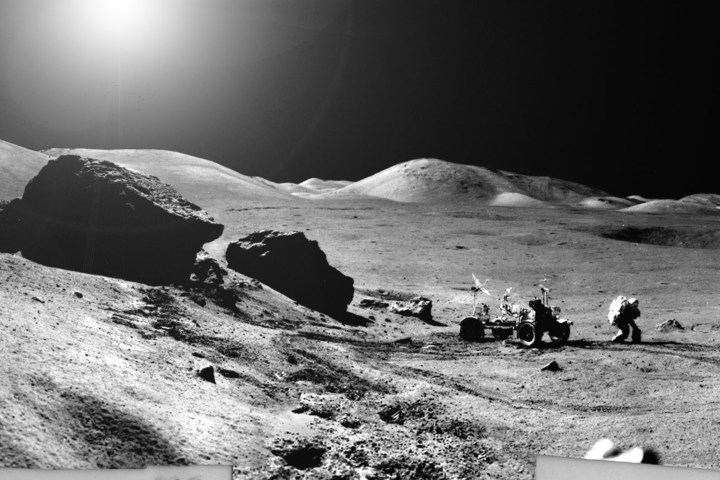
Rawlings sent out the image via a rather rueful Twitter post on August 15:
Painting I did in '89 titled August 21st, 2017.I actually thought 28 yrs in the future tourists might watch the eclipse from the Moon.Sigh.. pic.twitter.com/AFABanLuqf
— Pat Rawlings (@Patnspace) August 16, 2017
Rawlings has spent decades creating illustrations and paintings depicting space exploration, and his artwork has been featured on the cover of Aviation Week and Space Technology nine times. The hundreds of illustrations at his site feature asteroids, comets, lunar colonization, Mars exploration, and many more subjects.
The original painting, titled August 21, 2017, was sold to a private collector 15 years ago. It was originally created as an illustration for a children’s book written by Isaac Asimov. However, Rawlings’ tweet has gotten such attention from space enthusiasts that he’s made prints of the paining available in a number of different sizes and formats.
Rawlings goes to great pains to make his illustrations as authentic as possible. “Whenever I do paintings or any sort of art like this, I try to create almost a daydream of what it would be like,” Rawlings said in an interview with The Atlantic. “I imagine, in three dimensions, what the craters look like and then I start mentally walking around in that scene thinking, where would someone go to see it?”
If you’re going to enjoy the solar eclipse from the surface of planet Earth, don’t miss these six apps that will enhance your experience. If you plan to capture images of the event, you can always check out our solar eclipse photography guide.
Even though we don’t yet have a lunar base to document the eclipse, we do know what solar eclipses look like from orbit. In fact, Space.com has a very cool new gallery featuring a dozen photographs from 50 years of solar eclipses as seen from space, including one taken in 1966 by Buzz Aldrin and Jim Lovell aboard Gemini 12.
“I optimistically thought we’d be able to watch the eclipse from the moon,” Rawlings said about his 1989 painting. “A lot of things were going on that made you feel like the future was accelerating at a pretty rapid pace.” Unfortunately, there will be no lunar explorers to witness the event this time around, so we must rely on artistic conceptions to imagine what it might be like.


